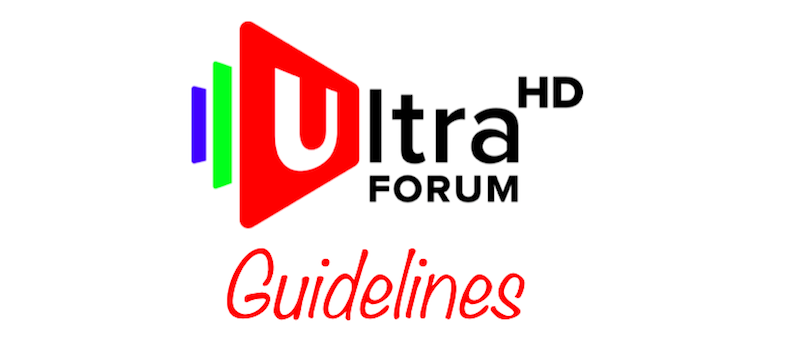Ultra HD Forum outlines next-gen 4K technologies
The goal of the 78-page Ultra HD explainer is to ‘introduce and de-mystify the technologies’ comprising the next-gen wave of 4K content, including broadcasts.

While the Ultra HD Forum’s UHD Phase A Guidelines focused on the 4K technologies commercially deployed in 2016 (HDR10, HLG), its Phase B Guidelines document (which you can peruse here) is a ‘preliminary look’ at the next generation of 4K technologies.
Future versions will concentrate on these being deployed in an end-to-end workflow.
So if you're interested in the future TV landscape, your lunchtime reading is sorted.
It defines such technologies as a) those that are functional in an end-to-end workflow (that is, from camera to consumer) and b) those at least two service providers demonstrate ‘interest’ in.
These include High Frame Rates (HFR) of 100 and 120 frames-per-second (the standard is 60fps or lower), which it deems possible for over-the-air content, as well as dynamic metadata (including Dolby Vision). The SMPTE (Society of Motion Picture and Television Engineers) is currently working on standardizing the packaging of HDR metadata in production facilities.
It also details dual HDR layers, meaning an image signal split into two layers suitable for both 4K/HDR-supporting and non-4K/HDR-supporting devices. There's a base layer, containing a lower resolution image, and an enhancement layer that contributes higher resolution details.
Last but not least, the document also covers ‘next generation audio’, which includes object-based audio (such as Dolby Atmos, DTS:X), across broadcast, over-the-air and mobile distribution platforms.
Get the What Hi-Fi? Newsletter
The latest hi-fi, home cinema and tech news, reviews, buying advice and deals, direct to your inbox.
MORE:
HDR10+ moves a step closer to Ultra HD Blu-ray
HDR10 vs Dolby Vision: which is better?
Becky is the managing editor of What Hi-Fi? and, since her recent move to Melbourne, also the editor of the brand's sister magazines Down Under – Australian Hi-Fi and Audio Esoterica. During her 11+ years in the hi-fi industry, she has reviewed all manner of audio gear, from budget amplifiers to high-end speakers, and particularly specialises in headphones and head-fi devices. In her spare time, Becky can often be found running, watching Liverpool FC and horror movies, and hunting for gluten-free cake.

